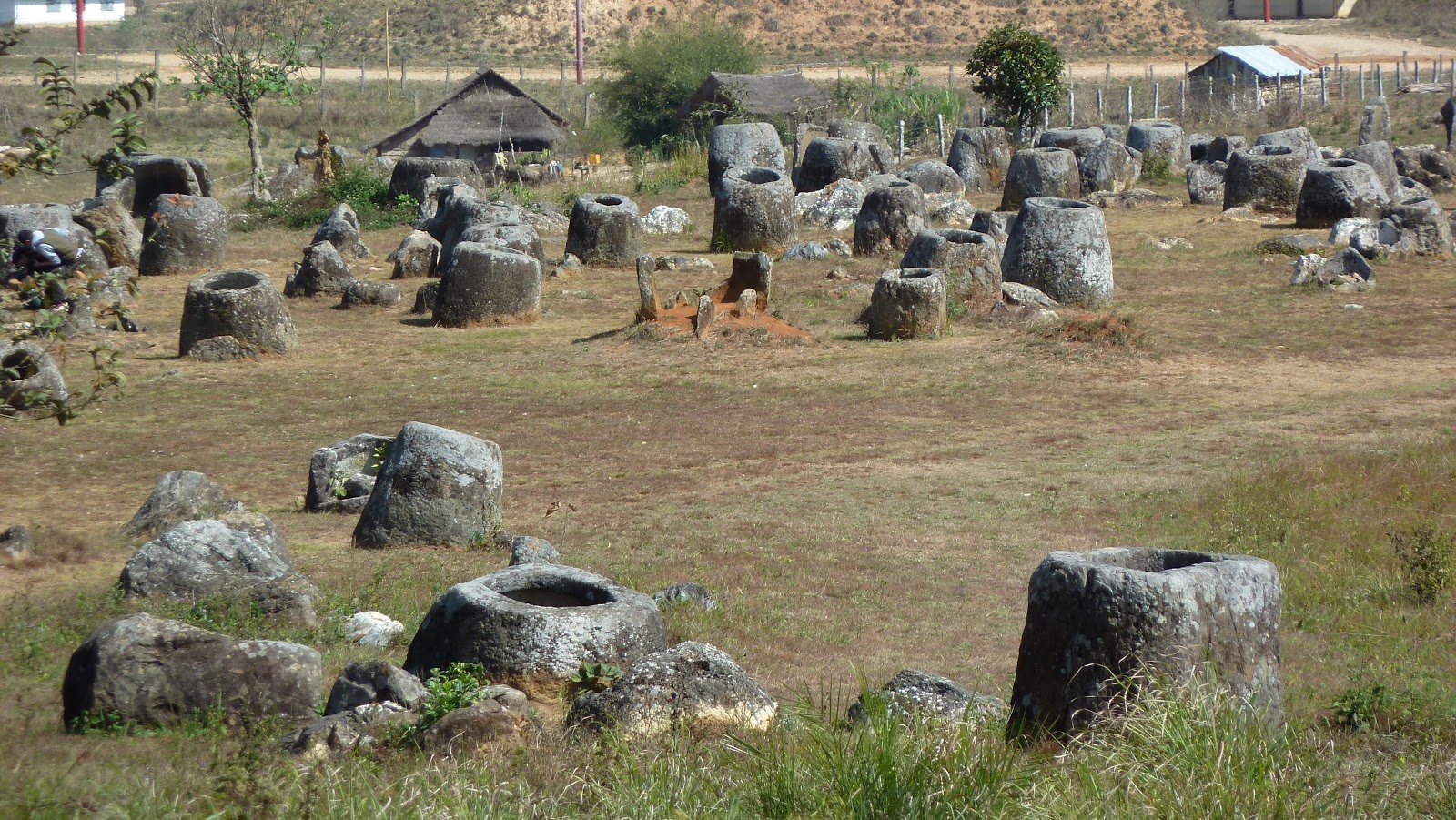The plain of jars in Laos, a fascinating site
July 29th, 2018 José Sitbon No Comment Destination destination, jars, Laos 4310 views
The plain of the jars, located in the province of Xieng Khouang in Laos, is a mysterious place. On a plateau around Phonsavan, imposing ancient jars spread over an area of about 1 000 km2.
 But what are they doing there?
But what are they doing there?
These jars were discovered in the 1930s by a Frenchwoman, Madeleine Colani, who even wrote a book about them: « Les Mégalithes du Laos ».
Today considered a major archaeological site in Southeast Asia, the region has 90 different sites with major concentrations of up to 250 jars.
1 to 3 meters high and weighing up to six tons, these urns were carved from caves, granite boulders or quarries before being transported to the hilltops from 500 years BC to 600 years later.
This period corresponds to the Iron Age.
 Their meaning and origin have not yet been fully elucidated and for good reason… The plain of the jars was an important battleground during the 20th century.
Their meaning and origin have not yet been fully elucidated and for good reason… The plain of the jars was an important battleground during the 20th century.
Indeed, Laos was the most bombed country in the Vietnam War. Since 2016, however, a new Australian archaeological project has been underway to try to better understand this mysterious place.
For those in charge of the project, who found human bones as well as small ceramic urns and bronze objects nearby, the jars were in fact probably used to contain the dead while the bodies decomposed. This explains why some jars have a lid. Local legends say that these containers would be used to store King Buffalo’s rice alcohol or to collect rainwater.
Currently, steps are being taken to classify the site on UNESCO’s World Heritage List. What is certain is that these jars have not finished to fascinate and raise questions.
On the same subject
Already 300,000 after Hurricane Melissa
The Jamaica Tourist Board has officially announced that the island has surpassed the symbolic...
Why North American tourists overwhelmingly prefer trains to visit Europe
As the end of 2025 approaches, Rail Europe has just unveiled booking statistics revealing...
Fighting continues between Cambodia and Thailand, bad news for tourism
Violent fighting erupted yesterday, Thursday, December 11, on the disputed border between Cambodia and...











